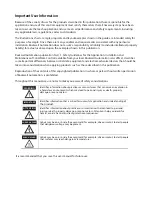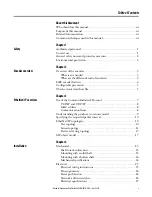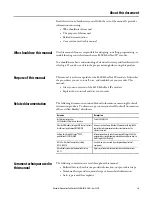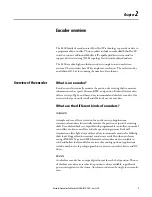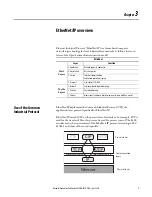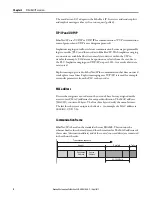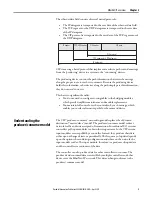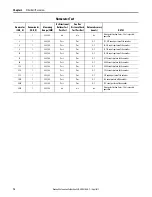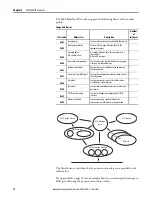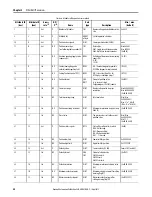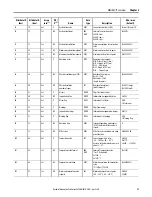
Rockwell Automation Publication 842E-UM001B-EN-P—April 2015
9
EtherNet/IP overview
Chapter 3
The ethernet data field consists of several nested protocols:
•
The IP datagram is transported in the user data of the ethernet data field.
•
The TCP segment or the UDP datagram are transported in the user data
of the IP datagram.
•
The CIP protocol is transported in the user data of the TCP segment or of
the UDP datagram.
CIP is a message-based protocol that implements a relative path to send a message
from the “producing” device in a system to the “consuming” devices.
The producing device contains the path information that steers the message
along the proper route to reach its consumers. Because the producing device
holds this information, other devices along the path simply pass this information;
they do not need to store it.
This has two significant benefits:
•
You do not need to configure routing tables in the bridging modules,
which greatly simplifies maintenance and module replacement.
•
You maintain full control over the route taken by each message, which
enables you to select alternative paths for the same end device.
Understanding the
producer/consumer model
The CIP “producer/consumer” networking model replaces the old source/
destination (“master/slave”) model. The producer/consumer model reduces
network traffic and increases speed of transmission. In traditional I/O systems,
controllers poll input modules to obtain their input status. In the CIP system,
input modules are not polled by a controller. Instead, they produce their data
either upon a change of state or periodically. The frequency of update depends
upon the options chosen during configuration and where on the network the
input module resides. The input module, therefore, is a producer of input data
and the controller is a consumer of the data.
The controller can also produce data for other controllers to consume. The
produced and consumed data is accessible by multiple controllers and other
devices over the EtherNet/IP network. This data exchange conforms to the
producer/consumer model.
IP header
TCP/UDP header
CIP header
CIP data
CIP protocol
IP datagram
TCP segment or UDP datagram
Summary of Contents for Rockwell Automation 842E-MIP Series
Page 1: ...842E EtherNet IP Absolute Encoder 842E SIP xxx 842E MIP xxx User Manual ...
Page 6: ...iv Rockwell Automation Publication 842E UM001B EN P April 2015 About this document Notes ...
Page 34: ...28 Rockwell Automation Publication 842E UM001B EN P April 2015 Chapter 4 Installation Notes ...
Page 83: ......


